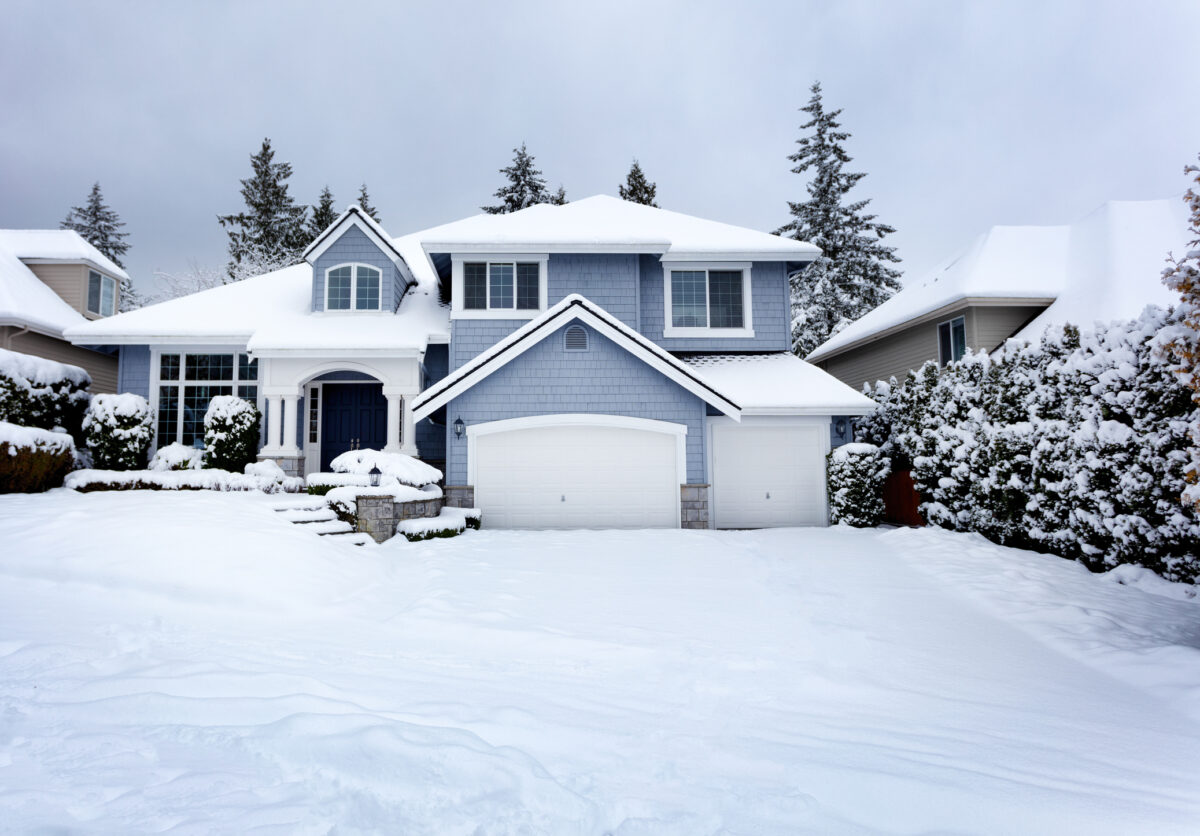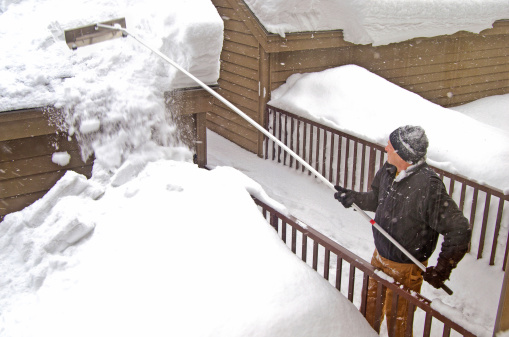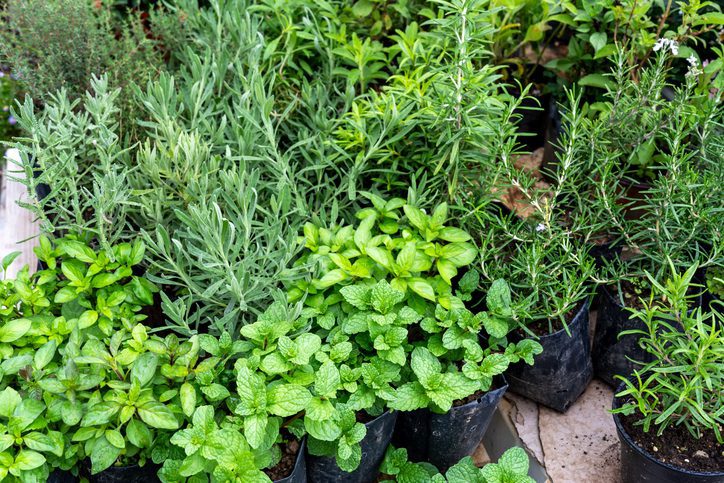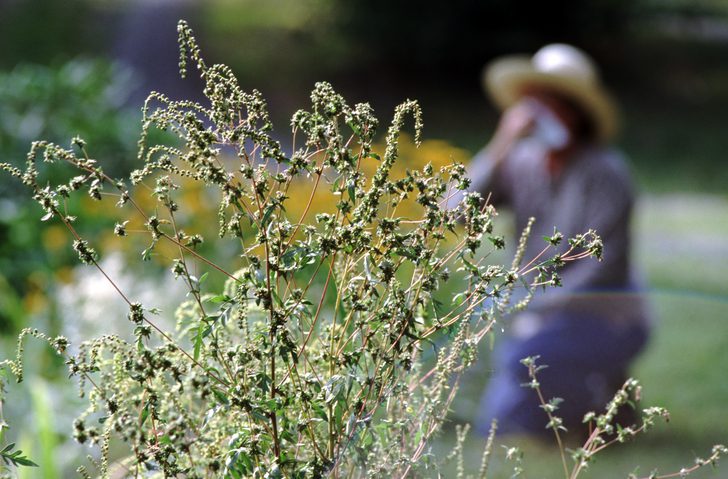Ever notice how your furnace seems most likely to break on the coldest day of the year? Your roof leaks just after a severe snowstorm? And just as you’re pulling out the down comforter to take cover from the night’s chill, your plumbing bursts?
Some home systems are just more likely to break down during winter. Not only is this inconvenient because winter is the time you need them most, but they’re also more of a nuisance to repair during the coldest months of the year.
With a little planning and preparation, you can avoid the most common winter home pitfalls. We’ve compiled a list of the home systems most likely to break during winter, as well as the best ways for homeowners to prepare their homes to avoid catastrophe.
1. Protect Your Water and Drain Lines
A frozen pipe has the potential to wreak havoc on a house. This is particularly true if you’re not at home when the damage occurs. Think about a burst pipe that floods your basement. Damage could include ruined carpets, soaked drywall, soggy furniture and even lost memories (in the form of damaged photos and home videos). If not caught immediately, sitting water could further increase your repair bills by creating a nasty mold problem.
Most likely to freeze are the water and sewage pipes in the uninsulated areas of your home—like the basement or attic—as well as those that run along an exterior wall. To protect those pipes from freezing, wrap them with foam or self-adhesive insulating tape, suggests Peter Duncanson, director of systems development at ServiceMaster Restore. It’s a matter of spending either $3 on a six-inch section of pipe insulation foam or thousands of dollars in water-related damage.
The pipes under the kitchen and bathroom cabinets are also at risk. This is because the closed cabinet doors create confined spaces that don’t allow air to circulate well. The solution: just leave your cabinet doors open if the air under them feels cold. This will allow warmer air from the room to circulate into your cabinets and around your pipes. Another tip to avoid freezing, said Duncanson, is to allow kitchen and bathroom faucets to run slowly. And, he adds, if you’re going out of town, don’t set your thermostat any lower than 55 degrees.
Outside your home, it’s often the hose bibs that freeze, which is fairly simple to prevent. Either install frost-proof hose bibs or take a few minutes to winterize them before cold weather hits.
“Once the temperature starts to drop, just remove your garden hose and turn off the water valve that feeds the hose bib,” said Justin Ake, home inspector with Helping Solutions in Altoona, Pennsylvania. Then, bleed any remaining water from the pipes. You can do this by either unscrewing the bleeder cap inside the house or allowing any remaining water to flow through the outside faucet. “Then you can just leave it open until spring,” added Ake.
2. Get Your Furnace and Hot Water Heater Winter Ready
No one wants to wake up on the coldest morning of the year to find out they don’t have heat or hot water.
“Not only will you freeze, but your pipes will, too,” explains Duncanson. To avoid this, schedule a professional furnace and hot water heater check-up before the cold weather season begins. Pros run a battery of tests on your systems to identify any weak spots. That way, you can take care of them before emergency strikes. Why do this before you have any known issues? As temperatures cool down, the HVAC companies’ schedules heat up because winter is when furnaces are most likely to break.
Not only will you have a harder time getting a professional out to your house in the winter, but you’ll also likely have to pay more. Their time is most precious in the winter months, so that’s when these professionals often charge a hefty premium for an emergency call. The lesson? It can be far less expensive to plan ahead.
3. Refill Your Propane Tank
Most propane providers suggest keeping your tank above 20 percent capacity at all times. If you heat your home with propane, make sure the tank is properly filled—not just because you could run out of propane when temperatures drop. Empty tanks can be penetrated by air and moisture, which often creates rust build-up inside the tank. This is hazardous because when rust mixes with propane, it decreases its odor making it more difficult to smell a dangerous leak. Also, if you run out of gas, the pilot lights on your appliances could go out. And an undetected propane leak in the house could create a fire or even an explosion when you relight the pilots.
Replacing a damaged propane tank—and rebuilding after a fire or explosion—can cost a pretty penny, but a few minutes of due diligence can save you thousands of bucks.
4. Examine Roof and Attic Insulation
When inclement weather strikes, large chunks of ice can form around the gutters and eaves of your home. This ice slowly builds up as it prevents more water from running into your gutter system. As a result, explains Ake, “ice dams” form under your shingles and can damage the sheathing.
One way to help prevent ice dams is to make sure your attic’s insulation is adequate and uniform. Say a part of your roof becomes warm enough to melt snow. If that water then flows down your roof’s slope and later encounters a cold patch, that water can turn back to ice. Now you have an ice dam.
“In severe cases, it can even make its way into the living space through the ceiling,” he warns. Of course, the more water that enters your home, the more damage you’ll have to contend with and the more expensive the repair.
When insulating the attic, Ake prefers cellulose which “works off the principle of density, so as it condenses with time it actually becomes a little bit more efficient.” As blown-in fiberglass, settles, meanwhile, it can lose some of its insulation value, making it less efficient.
If you neglect your insulation and end up with damage, you may have to wait until spring to call in the repair. Asphalt roofing shingles get brittle in sub-freezing temperatures, according to the Canadian Asphalt Shingles Manufacturers Association. Put too much pressure on them—like when a contractor walks on them while making a repair—and they can crack or break apart, causing more damage than if you’d held off and waited for milder days.
5. Clean Your Gutters
Clean out your rain gutters before Old Man Winter comes to town. Leaves and debris left over from fall can cause rainwater to get stuck. When temperatures drop this trapped water freezes and can damage your gutter and roof. Then as the ice melts, it has an easier path to the interior of your home. If you’re unable to, a handyman can clean gutters for just a few hundred bucks when the weather is mild. That’s a small price to pay compared to the potential cost of structural damage to the siding or framing of your house.
Finally, ensure that your gutter rainspouts are directed away from your house. Otherwise water can accumulate under your house and cause foundation and mold problems. Both are expensive and cumbersome to fix.
6. Inspect Fireplace and Chimney
A wood burning fireplace adds ambiance and warmth during the coldest months of the year. If not properly maintained, however, it can also increase the chances of house fire. Over time the chimney flue can become clogged with debris or lined with creosote. Either of these can cause smoke to build up and flood back into your home. Those conditions could even spark a chimney fire, which can quickly spread throughout your home. Avoid an expensive catastrophe by burning a $15 chimney log once a year to clear soot build-up and then having a pro thoroughly sweep the cavity once every few years.
7. Properly Winterize Your Swimming Pool
If you have an in-ground swimming pool, a little preventative work at the end of swimming season can help you avoid hundreds to thousands of dollars in unneeded repairs. For example, if you keep the water level too high tiles often crack, which can cost $500 or more to repair, said Michael Kern of MGK Pool Service in Lowell, Massachusetts.
And tiles may be the least of your worries. “Lower the water line too much and the pool cover—which can easily cost $2,000—can rip and fall in,” Kern warns. “I’ve even seen the cover fall in and tear the pool liner, which then drained the whole pool. The bottom line was over $10,000 in damages.”
Also ensure that you properly winterize your pool’s pump and filter. This can cost thousands of dollars to repair if damaged. “Pool owners usually have no problem clearing the skimmer line, but few have the equipment or knowledge to properly blowout the main drain line,” added Kern.
In short, shelling out a couple hundred bucks to have a pro close your pool at the end of the season could save you a bundle when the weather turns cold.
When to Call a Pro to Prevent Damage
If you’re not sure how to identify potential problems on your own, you don’t have to go at it alone. You can call in a professional to vet your home for you.
For a few hundred bucks, a plumber can check your home’s interior and exterior pipe lines to check for proper insulation and inspect sewer vents. To get a more thorough analysis of your home’s systems, call in a risk management professional. For a few thousand, they can perform an in-depth inspection of your home’s internal and external systems to identify any potential problems.
The Bottom Line
When it comes to laying your home’s winter groundwork, that old Ben Franklin adage is worth remembering— an ounce of prevention really is worth a pound of cure. That’s true whether you DIY or outsource your prep. Even the little things, like making sure you have sand, salt, flashlights, and snow shovels readily available, can be the difference between silently suffering and weathering the storm.
Bottom line? Putting in a little upfront time and effort can save you a whole lot of money—and hassle!—later, when Old Man Winter blows into town.







Thanks for all the good suggestions they are helpful . Much appreciated.
Thanks so very much for the important information. Greatly appreciated !
Phyliss Bethel
Lots of helpful winter prep info, thanks. Maybe next year you could put out a prep article just before winter, not mid season when the pros are busy. Just a thought.
I do not understand the comment about turning off the water supply and draining all the faucets. Do you then turn them back on right away? If not what do you do for water?
So if I were to drain all the water supply and turn them back on right away how will that prevent pipes from freezing?
Thank you.
Hi Dolores, thanks for reaching out so we can clarify. This particular instruction is related to the outside of your home. It’s often the hose bibs that freeze. In order to winterize them, you would turn off the water supply that feeds the hose bib until springtime. This would not provide water to the outside of your home during cold months, but you would still have water inside your home.
Hope this helps, but let us know if you have any other questions.
Great advice!
Thank you, Phyllis!
If during a cold spell is to turn off your water supply to your home and then draining all the faucets in your home and also drain the washing machine hoses. This will not harm your hot water tank but do NOT drain the hot water tank.
Assume you mean when vacating the house for a few months in FL or AZ?